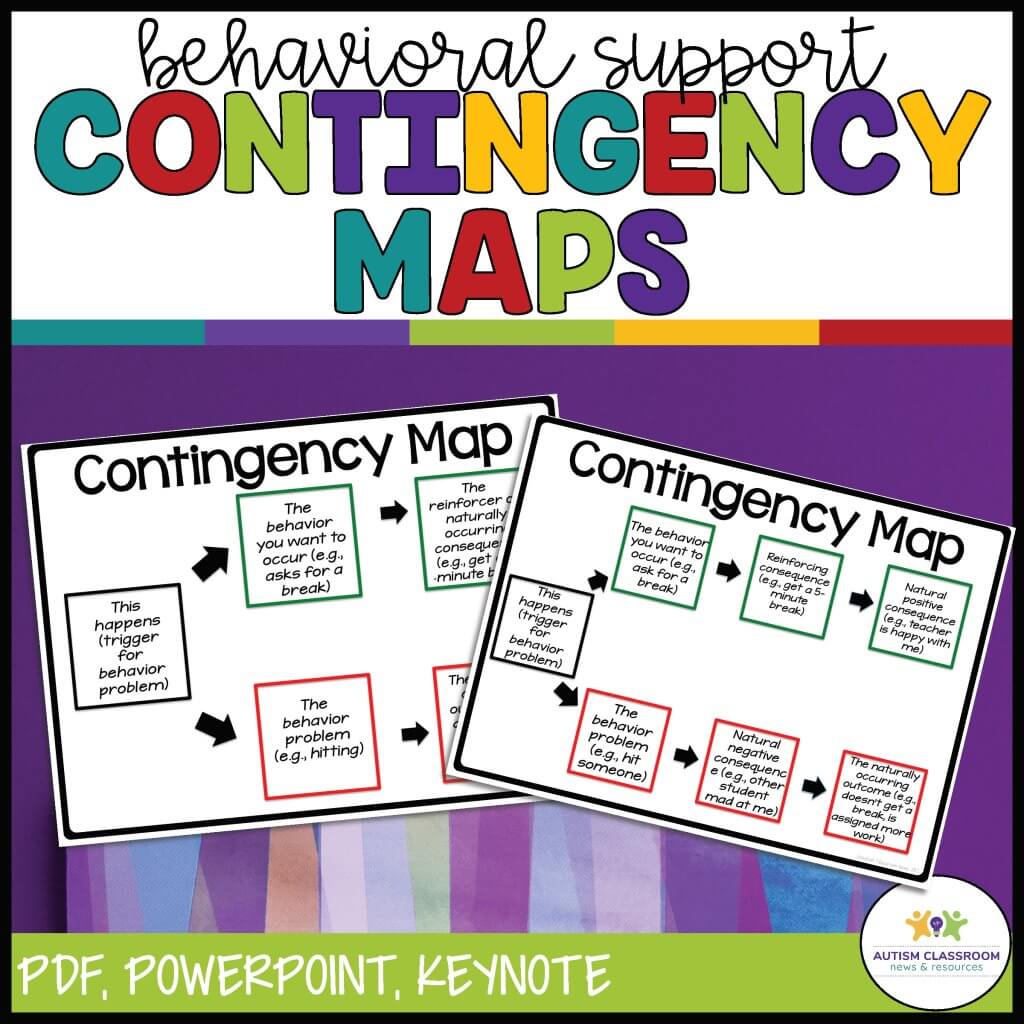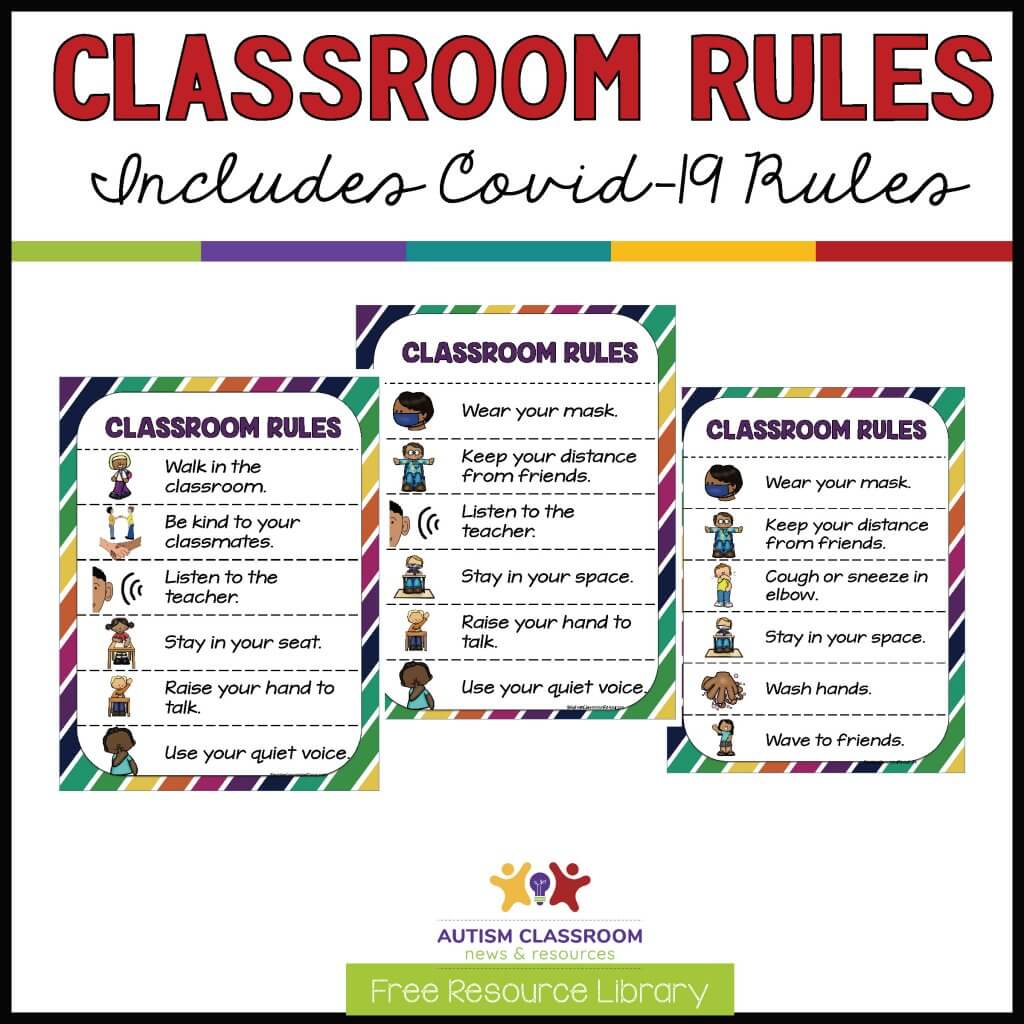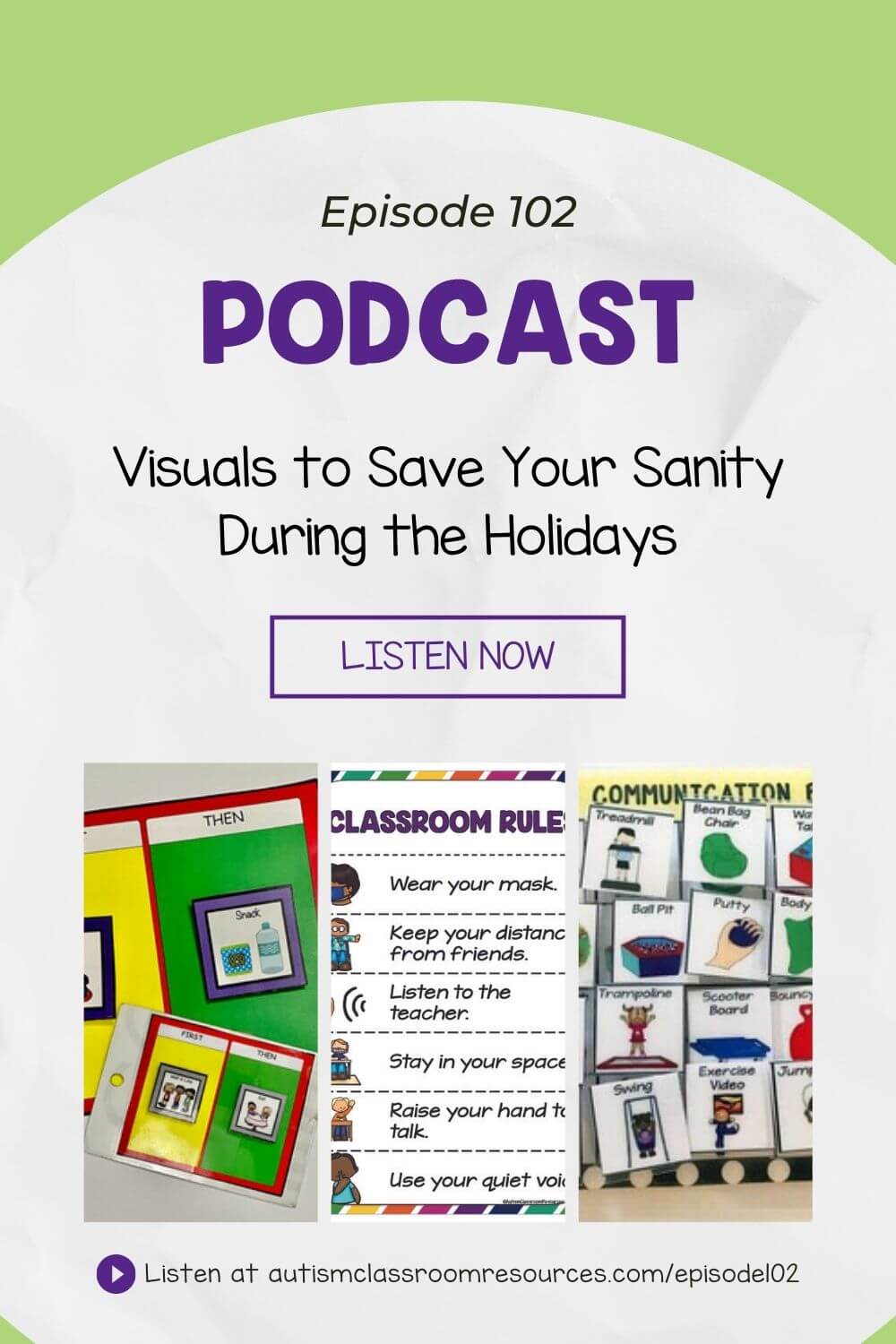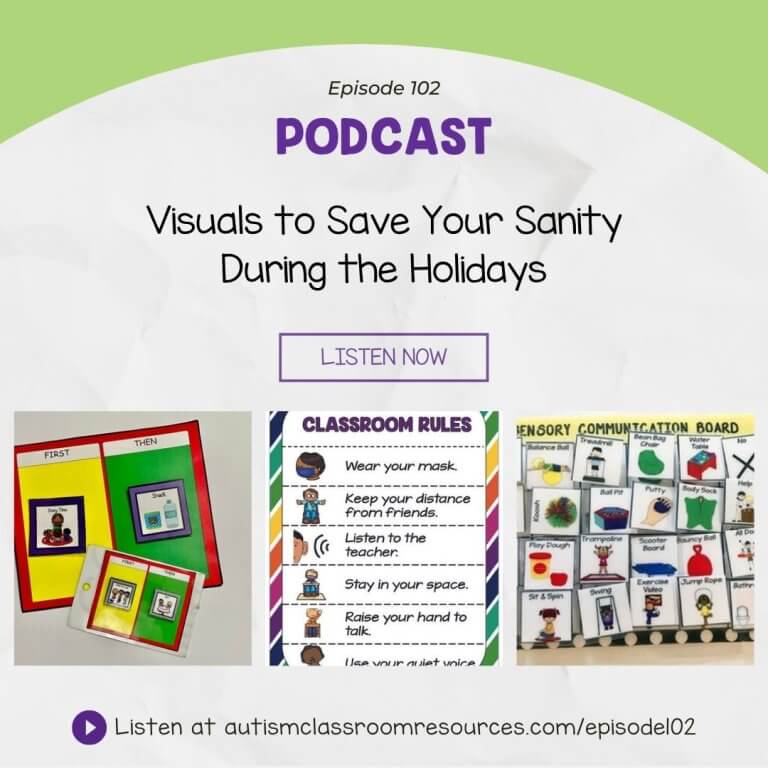Welcome to the Autism Classroom Resources Podcast, the podcast for special educators who are looking for personal and professional development.
Christine Reeve: I’m your host, Dr. Christine Reeve. For more than 20 years, I’ve worn lots of hats in special education, but my real love is helping special educators like you. This podcast will give you tips and ways to implement research-based practices in a practical way in your classroom to make your job easier and more effective.
Welcome back to the Autism Classroom Resources Podcast. I am Chris Reeve, and I’m your host, and I am so glad that you’re here today. I cannot believe we are in November and it’s 2021. And once again, we’re talking about a year that has not gone according to expectations. Do we even have expectations anymore about school years, or have we just given them up? I’m not really sure anymore. If you’re listening to this the time that it’s posted, we are coming up fast on Thanksgiving of another crazy year. And I know from listening to Academy members and reading to talking to all of you on social media that this year still has not settled into any type of normality for many of you, if not, most or all of you. Ordinarily, at this time of the year, I’m going to start talking about how to get through the holidays. Maybe collect some data for
extended school year determination, and perhaps about how to celebrate for the holidays with Thanksgiving, dinner feasts, and things like that. But, I think, this year, I’m going to kick it off by talking about how to survive and thrive in the holiday season because I know that some of you are teaching in what I’ve come to call a triage classroom. Because I know that many of you are teaching with skeleton staff or what I’ve come to call it revolving doors staff, where your staff changes every day or every week. And I know that I’ve heard that from Academy members and even created a whole live teaching session for them about teaching in triage where you have to prioritize what to focus on and your base level is really safety. So it’s not necessarily what we normally are looking at doing at this time of year.
So, today’s episode is going to focus on some basics that might have fallen by the wayside by this time of year, but may need to come back into play as things get a little squirrelly in the holidays. Because as I always say, when the going gets tough, the tough get visuals. Oh, and I have a free tool for almost every single strategy that I’m going to talk about today because I know that many of you have spent a ton of money this year trying to reinvent what your classrooms need. So, grab these free from the resource Library, I will have links in the show notes of the blog post for this episode. So let’s go ahead and get started.
Seriously, when things start to feel like they are running off the rails as the holiday excitement builds, the schedules get more interruptions and all the other things that can make teaching during a pandemic even more crazy. You have to go back to basics. And by basics, I mean three things: routine, predictability, and visuals. Those are the three things that will save your sanity. Focus for the next few weeks between now and winter break. I’m keeping students engaged in the routine. Try as much as you can to keep what you can predict. Yes, it would be ideal if we were keeping the rigor of our academics going. And if you can do that, more power to you. But if you are working with lower than normal staff, if you are not staffed to what you’re supposed to have, if you are dealing with students who came back not at the level that they were expected to have, if you have students that have never been to school, some of you have six and seven-year-olds who really never been in the school building before this year, that you are still teaching-learning readiness skills to, all of that means that you are starting at a different level. And that is okay. So, take that into consideration, given that some of what you are doing right now is trying to maintain your engagement so that you’re not creating more problems with behavior down the line that you’re going to have to deal with. So if we push too hard and too fast, we’re going to get behaviors that we’re going to have to figure out how to undo. Just consider that. Make sure that you’ve got a routine and predictability and use your visuals.
Given that, when you can’t keep something predictable, use your visuals to help your students see the changes that are coming and cope with those that you didn’t know were coming. Because, yes, I know that you will have changes that you were not expecting. We know that’s going to happen, and it’s not anybody’s fault. I’m going to focus on visuals in this episode because they’re going to help you help your students stay on track. Hopefully, you already have your visual schedule set up, whether they are written or pictures, just make sure that your students understand them and know how to use them. If you want more tips about using visual schedules, check out episode 74 @autismclassroomresources/episode74.
Now, let’s look at the common things that happen at this time of year that make your classroom cry-cry[?], and some strategies that can help with that. One, everyone keeps changing the routine and the schedules. The special teachers have special events. The school has special events, blah, blah, blah. Everyone has special events. And it all sounds like fun, except special events mean everything that is routine, gets turned upside down, and probably doesn’t thought feel so special to you. The solution, grab a change board. If you know that the change is happening, even if you only know five minutes ahead of time, grab the change board from the free resource library and slap your visual schedule visuals on it to show that instead of PE, you’re having a resource, you’re having sensory room today. Because the PE coach is off coaching… I don’t know, the choir pageant today. Then show the class that just before the transition or whenever you found out about it, this is what’s going to happen. Helping them see that the change is coming can help them anticipate it and prepare for it. You can also show it to them during morning meeting. You can also show that to them at whatever time of day you find out about it so you can let them know about it ahead of time. But even if you only know about it five minutes ahead of time, it’s a good way to give them a heads-up that something is going to be different. And you can grab a change board in the resource library, and it’ll be in this post. I’ll give you all that information in just a little bit.
Number two, new situations crop up and the expectations are uncertain. New pageants and parties and rehearsals keep popping up that your students aren’t used to. And those of you who teach multi-grade classes, every class is doing its own thing. So you’re trying to track six grades of them sometimes. Each one seems different so students don’t always understand that the same rules apply throughout the school solution. The solution, grab your visual rules from the classroom. If you don’t have visual rules in your classroom, you can grab a free set from the resource library. There are COVID rules in there, there are regular class rules in there, and there’s one that is a combination of the two. So you pick what makes sense for you. There are ones with pictures, you can make your own, just have words if your kids don’t need pictures. Take them to the music room for rehearsal, or to the stage for the pageant. As a reminder that the expectations in that setting are the same as they are in your classroom so that when the student starts yelling, you can point to quiet voice. If you’ve got, say, my visual lanyards that come with my classroom pack, they coordinate with those visual classroom rules and you can show them and use them that way as well. So there are different ways that you can use them. But those visual rules are really helpful to take with you to new settings so students see that they work there too.
Number three, new situations, be new behaviors for other students, or new uncertainty for how to behave. So, in addition to the rules, it might be helpful to use a contingency map to remind a student about how to behave in certain situations and how the outcomes of their behavior will work in certain situations. You can grab a free set of editable contingency maps in my free resource library or in my TPT store. I’ll put both of those links in the show notes. They are a visual way with pictures or text to show students the path of their behavior and how it will result in specific outcomes.
Number four, when faced with new situations, students are going to have a hard time knowing how long they are expected to manage to hold it together. I know I feel that way with holiday cocktail parties. Exactly how long do I have to stand around and make small talk? Well, I look at my watch to figure that out. A visual timer may work for your students to see how much longer they’re expected to be in the pageant concert. Fill in special activity here. Many times, being able to see how long they’re expected to be somewhere and when it’s going to end, is enough to make it easier to stay there. And while this is not one that I can give you for free, any digital timer will do. You can also use a sand hourglass, the sand runs through and they can see it run out, will work. And there are also some visual timers that I’ll put in an affiliate link in the post for this episode @autismclassroomresources.com/episode102 as well.
And lastly, number five, when a student is really struggling, don’t forget to have a first den[?] board on hand to redirect. There will be times that the students going to have a hard time and you’re someplace else. So make sure you’ve got kind of your bag of tricks with you to support your students wherever you are. I have a basic one in my TPT store, but I have one that has more options for free in my resource library. It has large and small options. The smaller option is great for printing and putting on a lanyard so that you have it with you at all times. And they’re a great way to remind students that if they do what you want them to do, then they get to do what they want to do. And don’t forget, it’s the power of motivation that is really what makes that first den work for you. It has to be, you get what you want to be done and then they get to do what they want to do.
So a lot of what I’m saying is, you want to up your use of visuals throughout this time of year. And, it is not taking a step backward. It’s increasing your support at a time when it is needed. It’ll settle back down again when the holidays are over and school comes back in January and things settle back down. We all have times when we need more support so don’t feel that your students are regressing because you’re doing this. However, if we don’t support them now when things are a little bit less certain, then we do run the risk of reinforcing negative behavior through patterns they learn during these times that will hold over after the holidays, and then we will have a problem. So if we provide more support now, we can prevent those behavioral issues from happening. You can find all the free tools that I talked about linked in the post for this episode, as well as relevant blog posts that will help you use them. They’re @autismclassroomresources.com/episode102. All of them are in the resource library @library.autismclassroomresources. com, but I will also put links to the blog post about how to use each one. You will get through this time, and if you need a bit more support and who wouldn’t[?], hop over to our free Facebook group @specialeducatorsconnection.com, and ask to join.
If you’d like a bit more intensive support from me and a small group of educators who are in the same boat, come try a 7-day free trial of Special Educator Academy to get your new year off to an amazing start. Don’t work on an island. Start your year off with support to feel confident about your teaching.
I hope that you’ll be back next week for another episode. And until then, I will be using my visual timer on the exercise bike at physical therapy.








